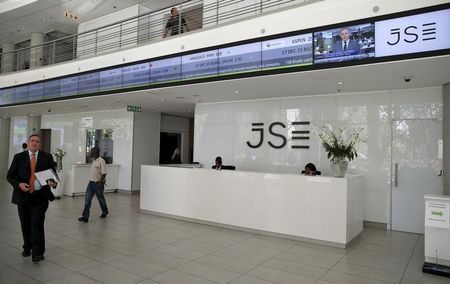
JOHANNESBURG (Reuters) – South Africa’s rand stumbled as much as 1.5 percent against the dollar on Thursday, reaching its weakest in nearly three weeks in a broad-based emerging market sell-off after the U.S. Federal Reserve raised interest rates and signalled more to come.
The Fed move also weighed heavily on gold shares that led the stock market lower.
The rand fell to 14.1800/dollar, its weakest since Nov. 25 according to Thomson Reuters data, before clawing its way back to 13.9725 by 1556 GMT, still down from Wednesday’s closing 13.9350.
The Fed hinted that rates could rise faster in 2017 than investors had been expecting, a move traders and analysts said would be rand-negative.
“If the Fed becomes more aggressive than anticipated this could accelerate the depreciation of the rand, with the knock-on effect of higher local inflation as import prices rise,” Sanlam Investments analyst Arthur Kamp said in a note.
Government bonds fall across the curve, with the yield on the 10-year benchmark closing 10 basis points higher at 9.025 percent.
The rand, however, is still up by about 11 percent against the dollar since the start of 2016, propped up by investor appetite for higher-yielding emerging market assets.
On the bourse, the benchmark Top-40 index tumbled 2 percent to 43,165 points while the All-Share index fell 2 percent to 49,691 points.
Local gold shares came under pressure, with the bullion index plummeting 8.6 percent as the spot gold price fell to its lowest in more than 10 months at $1,126.48 an ounce.
“She was probably more aggressive than the market expected and this is why gold came off more than expected,” said BP Bernstein trader Vasili Tirasi, referring to Fed chair Janet Yellen’s statement on Wednesday.
AngloGold Ashanti fell 8.7 percent to 134.02 rand, Harmony Gold tumbled 9.8 percent to 26.10 rand, Gold Fields slid 9.4 percent to 36.80 rand and Sibanye Gold was down 6.1 percent at 22.50 rand.
Trading was robust ahead of a public holiday on Friday, with about 537 million shares changing hands compared with last year’s daily average of 296 million.
(Reporting by Tanisha Heiberg and Stella Mapenzauswa; Editing by David Goodman)